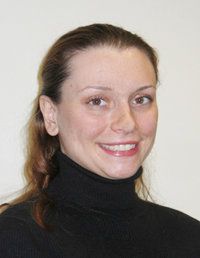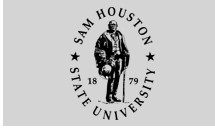Seeing is Not Always Believing, If It's In An E-Mail
 |
| Kelly Jakubowski is a senior journalism
major from Conroe. The opinions in this column are hers. |
If you use e-mail and have friends, they are likely to send
you amazing messages, with all sorts of incredible claims. Just
recently I got one that said that I would no longer have to pay
for 411 calls to get telephone numbers that I did not know.
There are reliable sources on the Internet to check
out such suspicious e-mails or stories. Besides snopes.com,
which is my favorite, symantec.com has
a listing of real and fake computer viruses, and about.com and google.com are
easy-to-use search engines that allow the user to type in a question
and look at a variety of sites that might be helpful.
A great explanation of the cost of hoax e-mails is at hoaxbusters.ciac.org/.
According to Snopes, and my personal trial, 1.800.FREE.411 will
actually connect you to a directory without charging you, as
my recent e-mail claimed. But this is only a rare instance of
truth in such messages.
SHSU's SamMail
can be a pretty attractive target to Internet abusers, and SHSU
computer services technicians try to eliminate SPAM, hoaxes,
and viruses before they ever get to your computer.
Robert Thompson,
a computer systems coordinator for SHSU, said that several methods
are used to catch SPAM.
"Every
e-mail that comes in is scanned for file names and content. There
are several tests that can look for common things that spammers
do. It looks at how many e-mails are the same and it creates
statistics."
A score is given to each e-mail, and if it's over 5.5 it will
be marked as SPAM, with curly brackets around it. If the score
is over 13, it won't even be sent.
"They
have to be really bad to get that high score," said Thompson.
Thompson said that SHSU gets millions of e-mails, and of each
million, 100,000 are SPAM.
"In many
respects, SPAM is just a waste of disk space," said Thompson. "It's
basically harmless, but there is a lot of equipment and horse
power used up in dealing with SPAM."
Once a virus
gets in, Computer Services can't remove them for you, Thompson
said, because the school's funding from tax money and fees cannot
be used in that manner, but there are several stores in the Huntsville
area that can do the job.
Other concerns,
like hoaxes, are usually harmless, unless someone falls for it.
Even if Sam
Mail isn't the target, just about everyone has heard some rumor,
or gotten a strange e-mail on a different server.
Dan Landson,
a senior RTV major, has gotten the famous Nigerian scam e-mail,
but fortunately didn't fall for it, as thousands of people have.
It claims that a crooked Nigerian official, or that of some other
country, is trying to smuggle some money out of the country,
and he'll share a percentage of it with you, if you'll just help
out right now with some cash for bribes and fees.
Landson feels most people who send useless mail over the Internet
are basically harmless, especially in the case of those "heartwarming" stories
that are forwarded all over cyberspace.
"Everybody
has a good heart and they may think that they are touching somebody
else's heart. They think they are doing a good deed, but it's
not."
Political Science professor William Carroll explained his favorite
e-mail hoax, which was far from heart-warming. Blood-curdling
might be a better way to describe it.
"It said
that Bill Clinton was responsible for the deaths of about 50
people, I don't know, it might have been more than that. I knew
it was crazy. I didn't have to double-check it. I think something
like the one that I got comes from people who want to believe
it, because it reinforces the negative attitude that they already
have about Clinton. There might be people who actually believe
these things."
Rebecca Gonzalez,
a freshman music education major, gets a lot of chain letters,
but the most memorable one warned her to forward the e-mail to
15 people or die at midnight---at the hands of a killer clown.
She followed the letter's instructions, just in case.
She said she feels most people make up hoaxes because they have
too much free time, but she would forward a horror hoax to someone
she doesn't like.
"I don't really read them," said junior Novalyn Godkin. "If
it's a forward, I just ignore it."
"I'm sure the people that start them are just trying to
be funny, but the ones that forward them actually believe it."
She's gotten e-mails warning about police impersonators (which
do exist) and gang members who hide under cars and slash women's
bodies as part of their initiation. There is not one documented
police report, news story, or other reliable source to confirm
this urban tale.
An e-mail that came to my inbox warned of a killer luring women
from their homes with a recording of a crying baby. When they
went to investigate, they died a horrible death.
This was actually sent by my mother. And true to form, she believed
every word, and thought she was doing me a favor.
As every good journalist knows, "If your mother says she
loves you, check it out."
Or, in the case of an idiotic Re: in your inbox, "If you
don't know what it is, just delete it," said Thompson. "Do
you deal with PayPal, is there any reason for them to be sending
you an e-mail? 'Click here to see Anna Kournikova naked,' and
thousands of people will be clicking it. It's probably not worth
it."
—END—
SHSU Media Contact: Kelly Jakubowski
Feb. 23, 2006
Please send comments, corrections, news tips to Today@Sam.edu.
|


